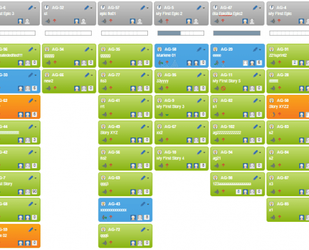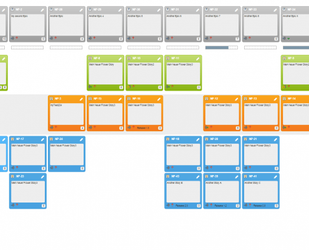Client Overview
TIM Solutions GmbH is a leader in developing and supplying custom Business Process Management (BPM) systems that enable its international client base to maximize automation level of management processes and so improve efficiency.
The company is dedicated to both delivering the best product available in this competitive market and to remaining ahead of the competition by listening to its customers and incorporating critique, feedback and new features into each release. Speed to market is vital and so an Agile methodology with Scrum was adopted from the outset, which has proven to be an excellent approach so far.
Having tested several products, they quickly adopted Jira and Jira Agile (formerly GreenHopper) as the tool of choice to support project management. As the company’s success and market share has grown very rapidly, so too has the size of the product development division. Now there are five Product Managers and five development teams. For major revisions and releases, all five collaborate. This has uncovered a major flaw in the Agile process that was so successful in the early days.

The Challenge
While Jira is acknowledged as being excellent for managing individual projects, it is weak on support for concurrent multiple streams of development. Product Managers can manage their own product backlog but all stakeholders have lost sight of the overall picture, the broader context of the full project. This does not just apply to the Product Managers and developers. Business stakeholders too have complained that they do not know what is being developed across the entire piece. Attempts to explain and clarify have only led to misunderstandings and further stakeholder dissatisfaction. A review and report to management summed up the main issues as follows:
Our teams only see their current Sprint scope and not the big picture. Even then, the borders between separate product backlogs are not clearly defined, making planning difficult. Context and relationships between stories are lost and the flat backlog is just a bag of context-free, incoherent features. Clarity has been lost. Visualizing and communicating project progress is difficult when it should be simple. What is needed is a holistic viewport across all streams.

The Solution
Enter Agile User Story Map for JIRA, a smart JIRA plug-in from Bauer Information Technology. Very quickly during the assessment, the company realized that the enhanced visualization of the tool solved many problems at once. Communication across all teams and business stakeholders improved immediately. Now it was possible to manage the entire product, not just one project. All teams understood the big picture and felt a part of something big. Priorities became obvious and the product owner knew what to implement next. It was very clear which tasks represented both quick wins and major effort. Strategic product design and direction was readily apparent. The product roadmap was pictured easily and could be communicated visually to the customer. Project progress could be seen and understood at a glance by all stakeholders.
Priorities became obvious and the product owner knew what to implement next. It was very clear which tasks represented both quick wins and major effort. Strategic product design and direction was readily apparent. The product roadmap was pictured easily and could be communicated visually to the customer.
Management View
Shortly after the company rolled out Agile User Story Map for JIRA to the product development teams, management saw an opportunity to deploy it as a simple and very effective tool for managing the company itself. The concept of storyboarding is not new but until recently was confined to the field of media productions such as advertising and movie production. Now it is being adapted to achieve all manner of objectives that can be described as a project with identifiable tasks and steps. But it requires a visual mapping tool that is easy to learn and easy to use to unleash the full benefits. Agile User Story Map for JIRA is such a tool. The company is now truly agile, not just in software development but also in managing itself. Agile User Story Map not only made product management easier but also company management. The company’s strategic vision for the next years was built on a Story Map.

What the Customer says
We are extremely pleased with the significant benefits that Agile User Story Map has delivered. Return on investment was achieved rapidly because the benefits were realized almost immediately. Agile User Story Map has brought transparency to both the development team and to product management.
Probably the most difficult roles in an Agile process are those of product owner or Agile customer. Finding and identifying relevant product context is your most valuable tool as a product owner. That context provides you with the basis for feature prioritization and effective decision making about the details of your product. Agile Story Map serves up and visualizes this context.